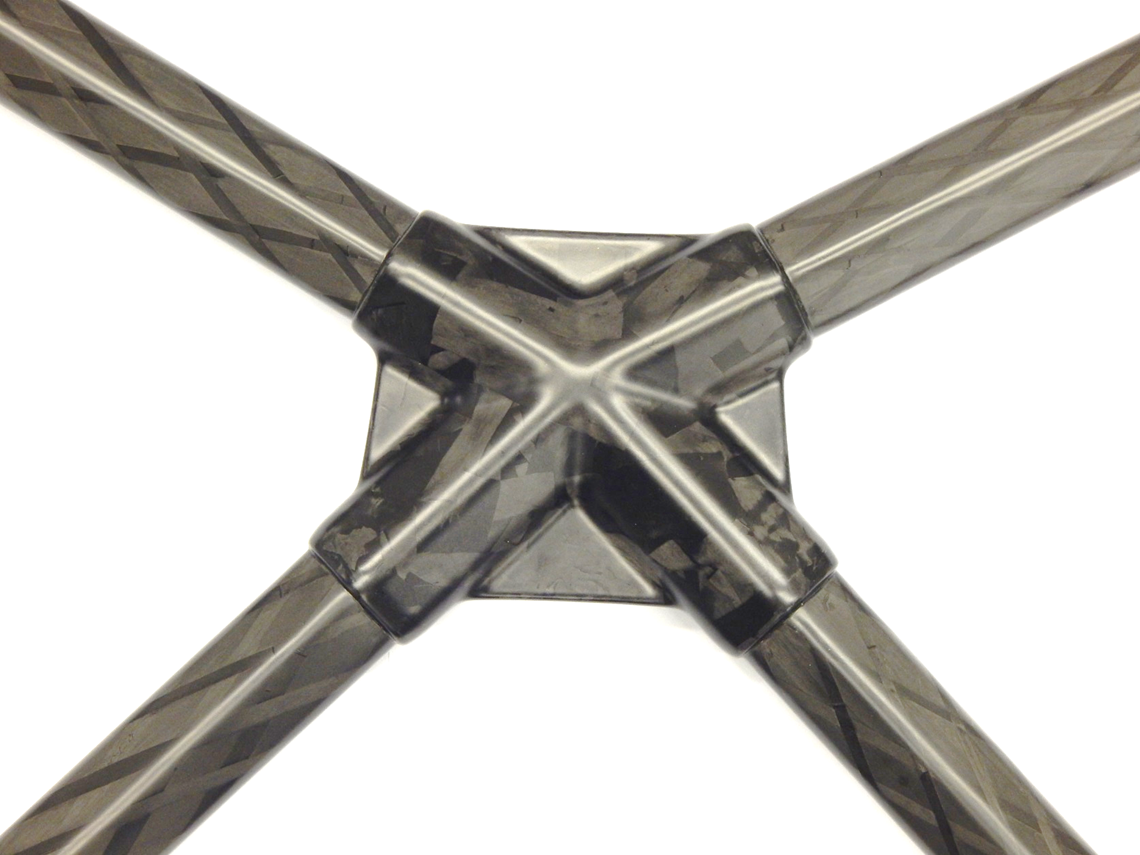
A carbon fiber/epoxy molding compound from Hexcel has been used in a new overmolding process to produce a hybrid structure. The structure comprises Secar Technologies’ pullwound carbon fiber sections and Hexcel’s structural, rapid curing HexMC-i.
The two companies, along with Audi, joined forces to develop a composite engine bay brace for the Audi R8. This cross-shaped component braces the R8’s mid-mounted V10 engine and provides increased torsional stiffness. The project’s aim was to produce a composite version of the existing aluminum part that would offer improved light weighting as well as an improved visual appearance by providing a more organic molded shape.
For the R8 X-Brace, foam filled pullwinding carbon fiber tubes were produced and then overmolded with HexMC-i 2000 carbon fiber/epoxy molding compound to produce the central node and tube end terminations for direct mounting to the car.
The companies had to consolidate the molding compound and ensure the strongest adhesive bond with the thin walled (<1mm wall thickness) carbon tubes without crushing the pre-cured elements. Secar and Hexcel were also able to improve tool loading and press cure cycles to provide the best processing parameters for the compound with the M77 snap cure epoxy resin allowing a weight reduction of 15% over the previous aluminum version.
All metallic inserts for mounting the X-Brace were molded directly into the part during production, with the demolded part requiring minimal finishing before installation into the R8’s engine bay.
In tests, the part showed a sufficiently strong bond to the pullwound tubes with no adhesive film or additional bonding material required between the tubes and the HexMC-i molding compound.
This story uses material from Hexcel,with editorial changes made by Materials Today. The views expressed in this article do not necessarily represent those of Elsevier.


